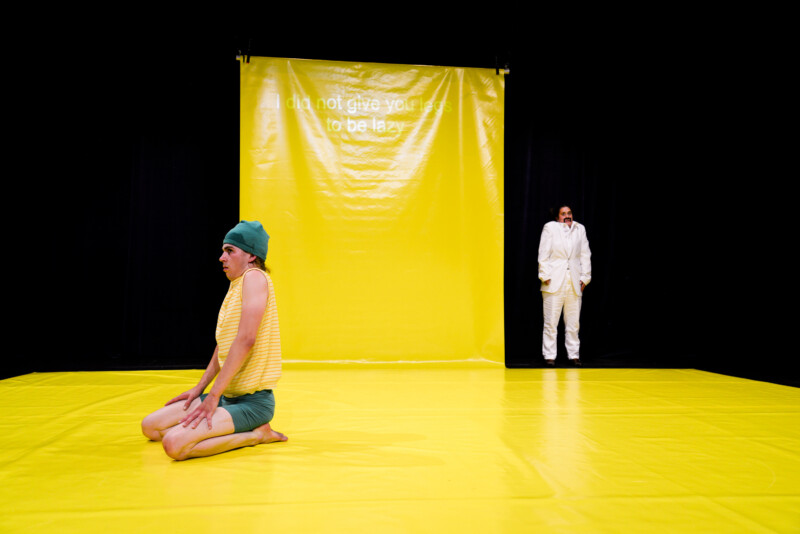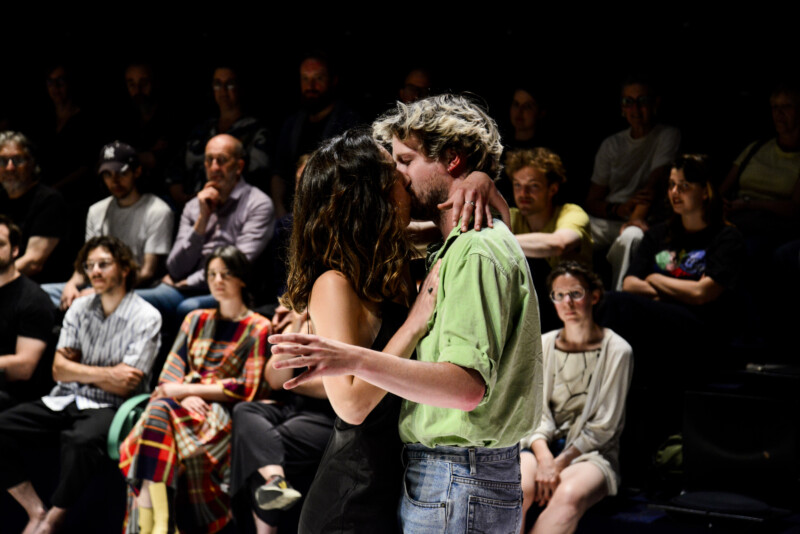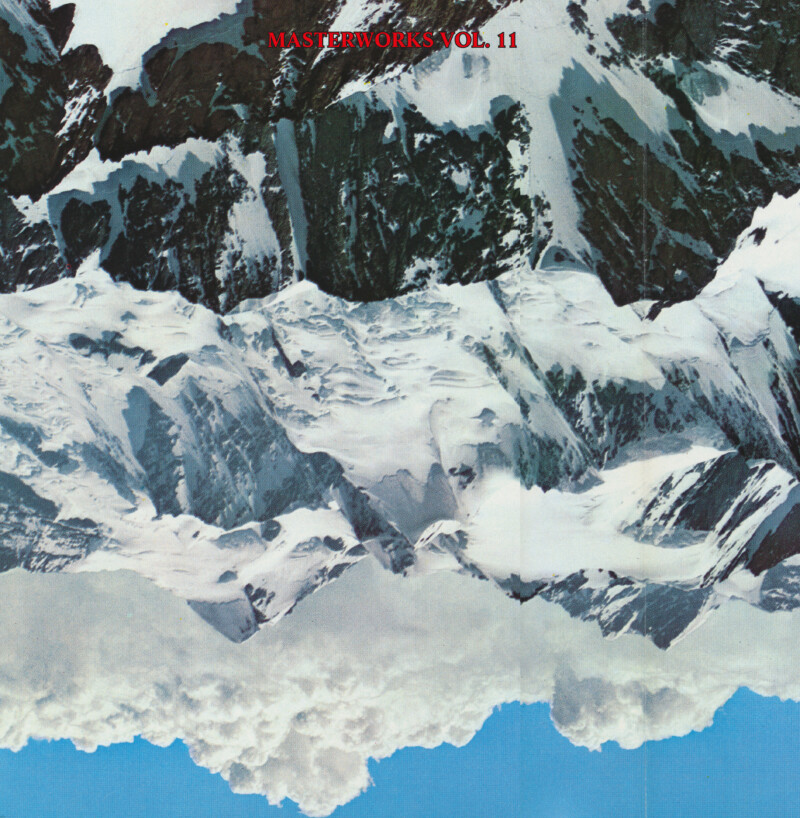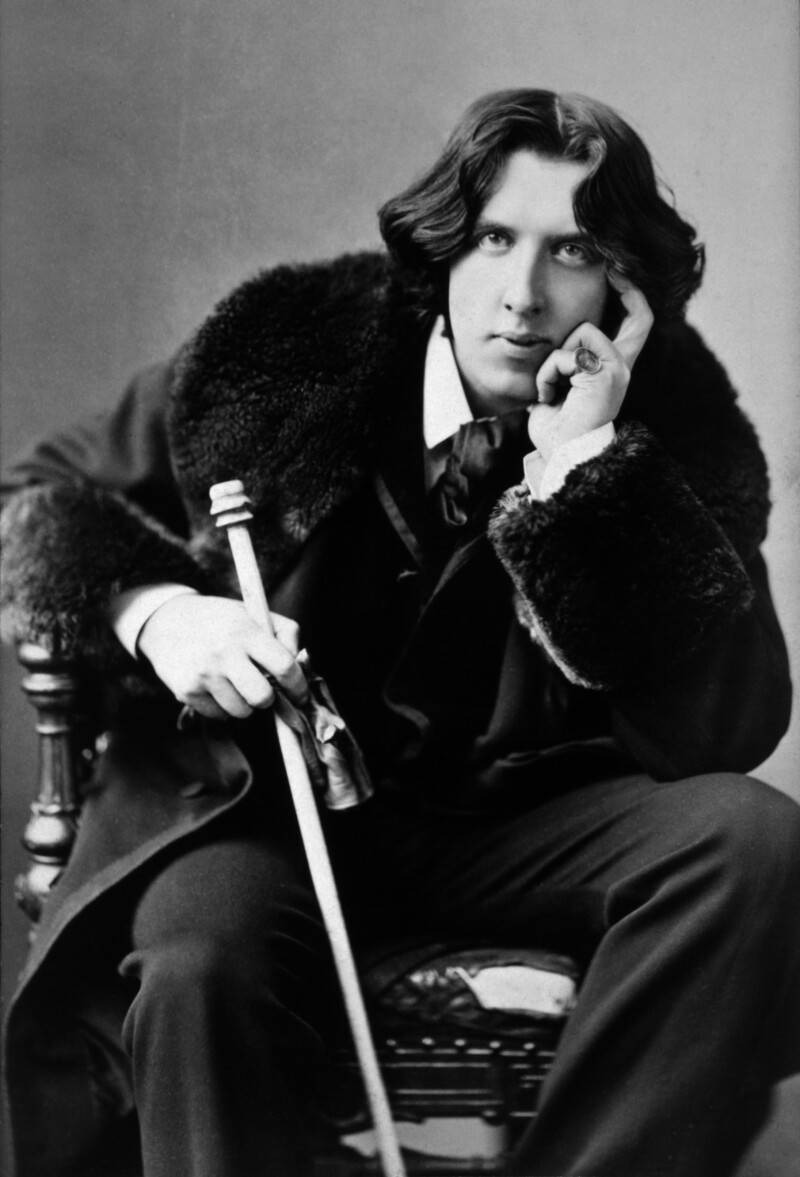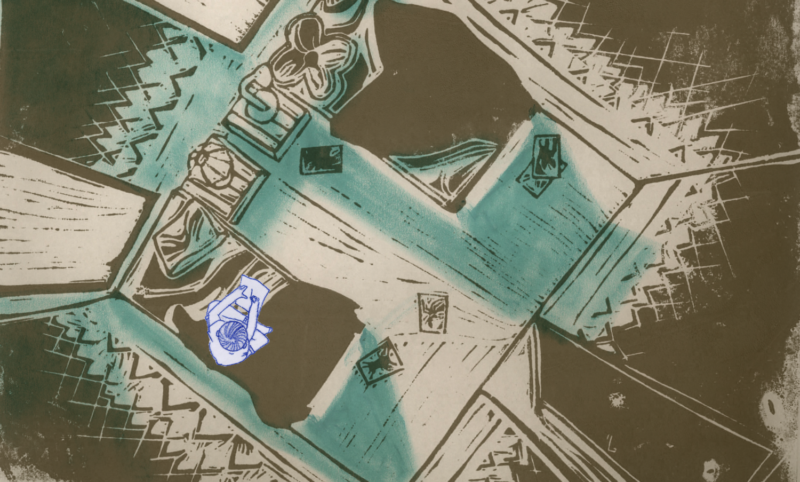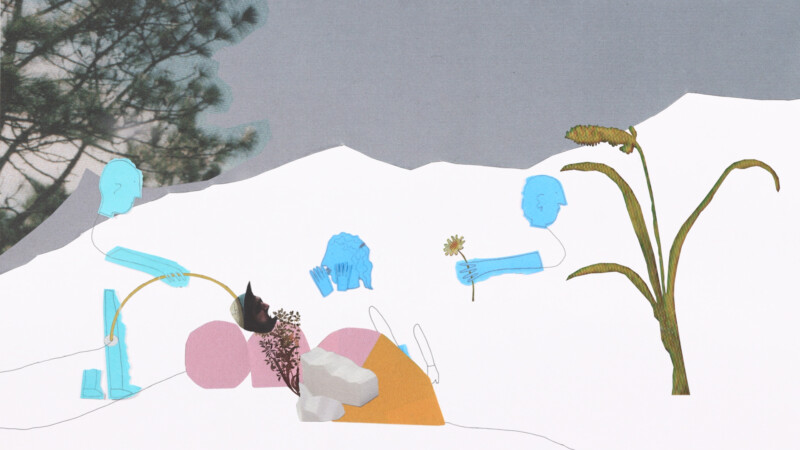Lieze Vanlerberghe
Parasitic Blue
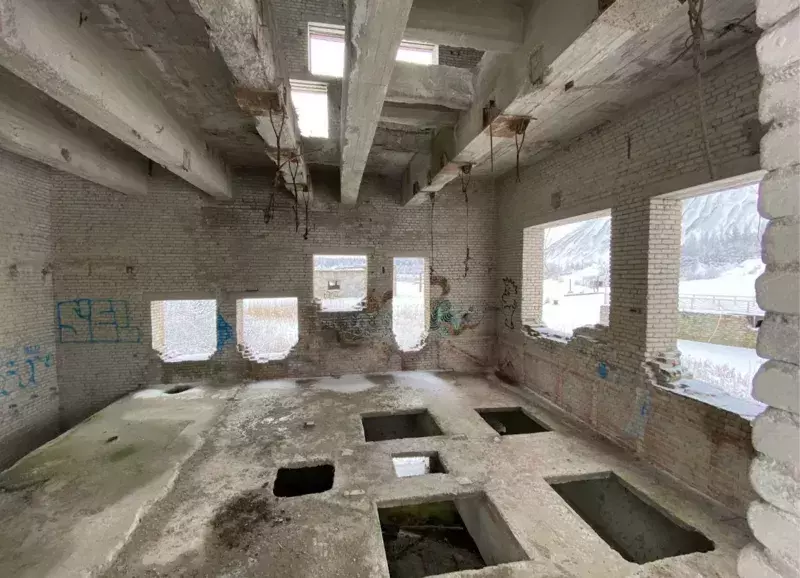
Parasitizing does not necessarily have to be a bad activity. Interior design student Lieze Vanlerberghe proves this with her final design: a streak of blue with a big impact on the landscape and its history.
Onrust
Tell us, what was expected of you in your final year?
Lieze Vanlerberghe
Our assignment was to design a parasitic structure with social impact. As you can hear, that was defined quite broadly. For example, there was no place assigned beforehand. On land, at sea or in the air, we could choose. Most opted for a square, park or church. But not me.
Onrust
I understand that your Erasmus experience played an important role in your choice.
Lieze Vanlerberghe
Indeed, I spent the first five months of this school year in Estonia. That didn't go smoothly right away. Initially, there was someone to help me - fortunately because an Estonian tenancy is no sinecure. After a week, however, I was on my own, the only Erasmus student in the class. The assignments were briefly summarised for me in English, which made me think I was missing some information. Strangely enough, my project proposal was immediately approved. Here in KASK & Conservatorium, you usually get more support and feedback. Was it really okay or was it laisser-faire? Perhaps it was due to a different vision of design. When I had drawn spotlights on a certain floor plan, to them it was already overkill, while I myself felt it was not technically elaborate enough. On the other hand, sometimes it was nice to adopt a different design method and not be held back by the technical side. In KASK & Conservatorium, I often bumped into technical difficulties which meant I had to curb my crazy ideas a bit.
Onrust
And did it work out in Estonia in the end?
Lieze Vanlerberghe
Yes, it did. Estonians are somewhat closed, but once you penetrate their bubble, they open up. More than that, they supported me in word and deed, because my project is intimately intertwined with their homeland. It was notably during an adventure trip that I stumbled upon my chosen site, some 40 kilometres from Tallinn: a former Soviet labour camp, a prison in other words, had more or less been turned into a kind of water park. For instance, the lake was once a limestone quarry. After the fall of the wall, the locks were opened and it was flooded. Divers can still see traces of forced labour there today.
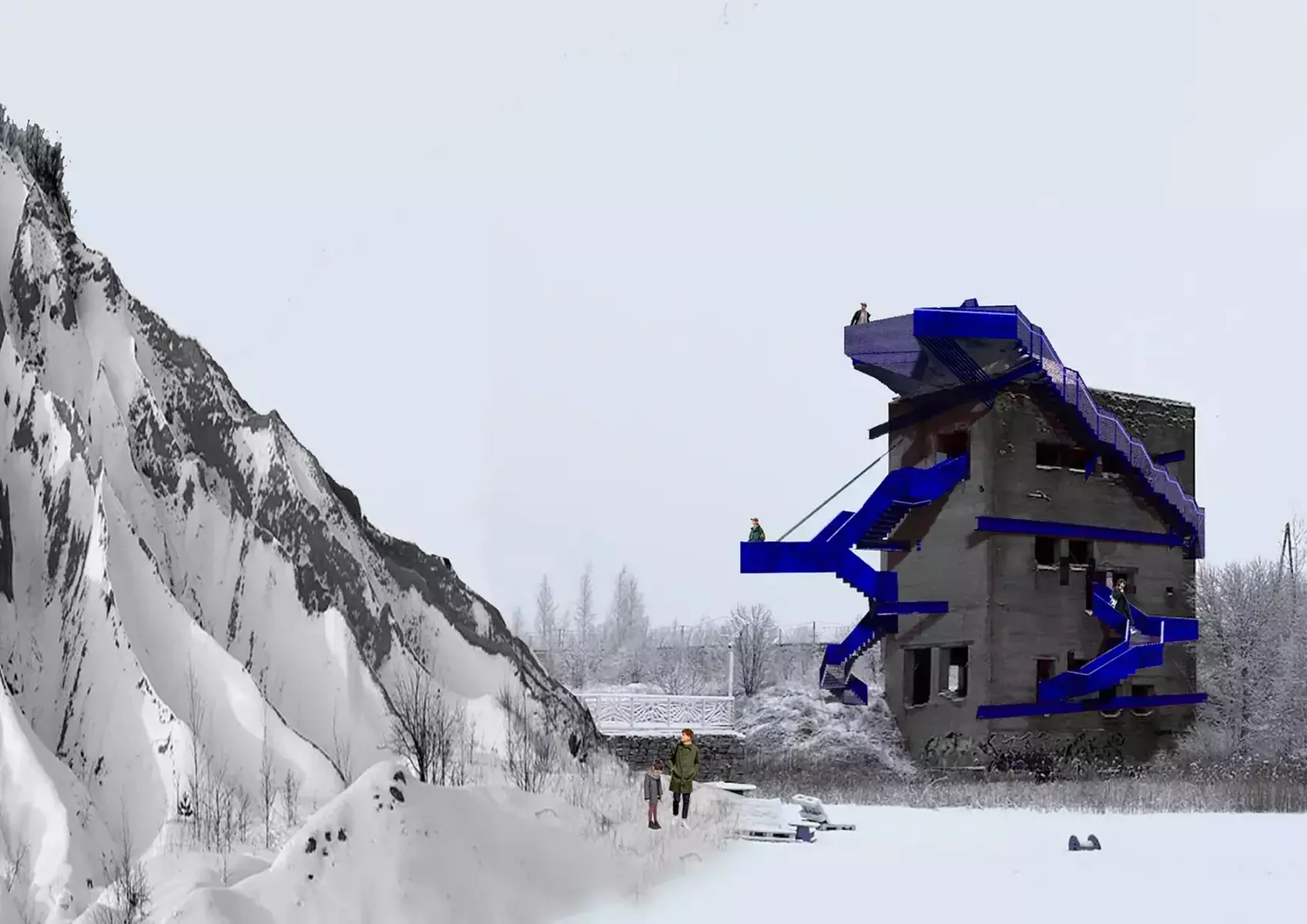
Onrust
What exactly appealed to you about that place?
Lieze Vanlerberghe
At first, I found the landscape in itself overwhelming: the water, the mountains, the buildings protruding here and there. I only found out the finer details after doing some research. That was not so obvious, by the way. All the documents were in Estonian. I spoke to the dive centre's boss and even turned to the embassy. That's how I found out a bit of this grim history, although it was only when I returned in winter to take some measurements that the ferocity of it really dawned on me. In the summer months, it's all fun and games, but in winter, snow-covered, it looks very different. Chilly and quiet. Suddenly that history almost literally surfaced.
Onrust
A strange experience no doubt.
Lieze Vanlerberghe
Anyway, I got the feeling that I had been partying on a grave. Remember, what the World Wars are to us, the Soviet era is to Estonia. Like ours, the country was often overrun by more powerful neighbours. In the capital, museums remind of this, but here things seemed exactly covered up.
Onrust
And a project was born?
Lieze Vanlerberghe
That experience certainly inspired me. My eye eventually fell on a brutal, typical communist building half under and half above water. It had several floors and in seemingly random places there were holes in the walls. Perhaps there were cables through there at one time, although the specific function was never entirely clear to me. Anyway, I wanted to highlight the building by making a walkway around it, a living structure wound around, through and along that heavy, grey foundation. So I ended up with nine pieces of stairs, each adding a different perspective. One faces the mountain, once risen there by the digging, another piece then runs along the outer wall, but leaves an oppressive slack. Anyway, I wanted my structure to touch the building as little as possible. This left a certain margin between the present and the past.
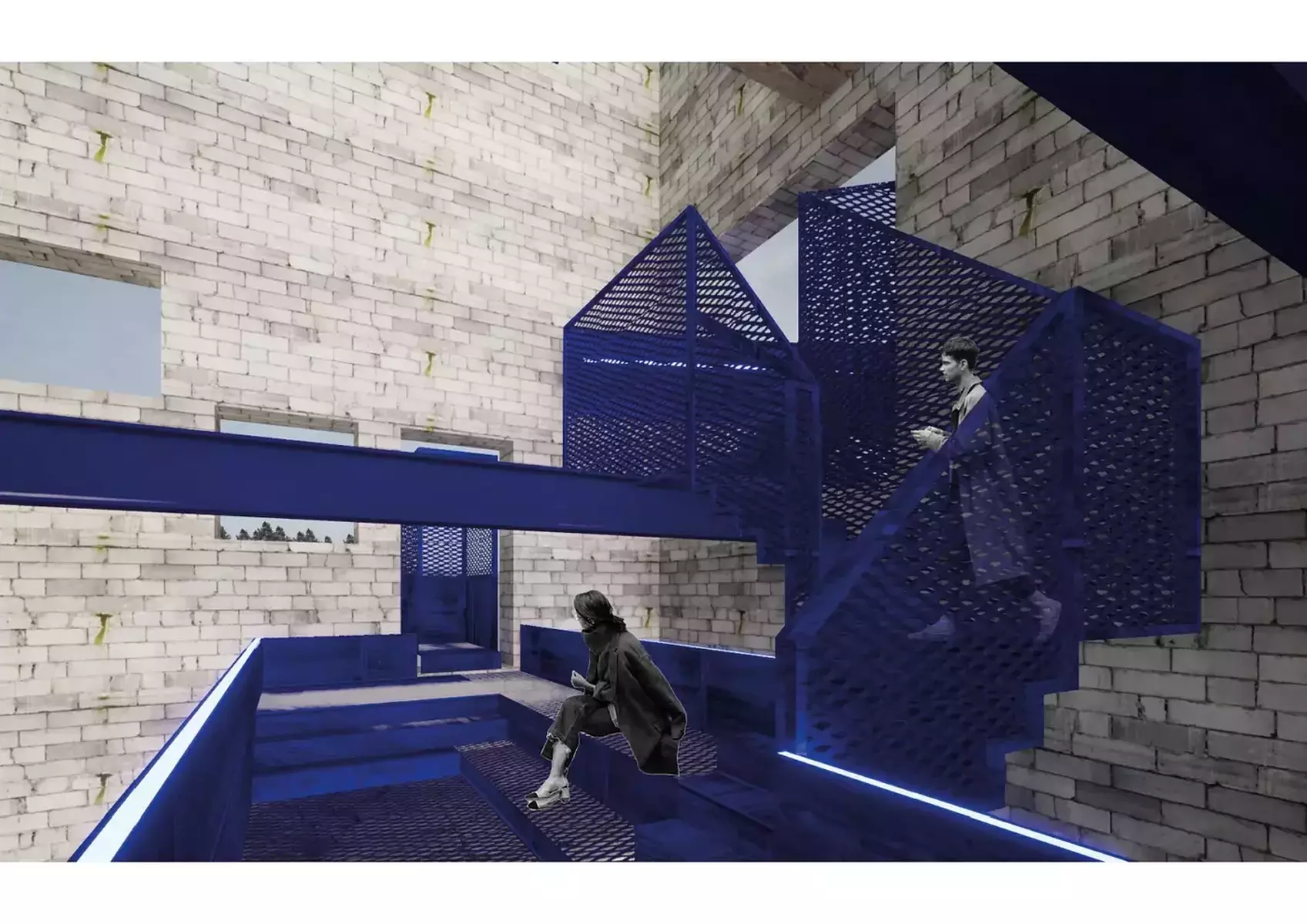
Onrust
What made you choose all that blue in the structure?
Lieze Vanlerberghe
Has to do with the flag of Estonia, which you see everywhere. It's based on nature. The blue of the sky at the top, black of the barren trees in winter and then at the bottom the white of snow. So blue was 'missing' from the landscape. Blue is the common thread.
Onrust
And does it also appear in your other designs.
Lieze Vanlerberghe
In a way it does. I notice that such a complex path is a recurring element. Last year I also had to make a construction, an ode to architect Akihisa Hirata. It became a bamboo construction, also with a footpath. Only afterwards did I discover: the more complex and larger, the more I like it. Anyway, I am very satisfied with this graduation project. I am proud that I remained persistent, even if I sometimes had to rethink things a bit. My teacher always said, 'Nothing is impossible'. Thus, my creativity continued to grow and I was able to make the most of it.
Onrust
Brava.
